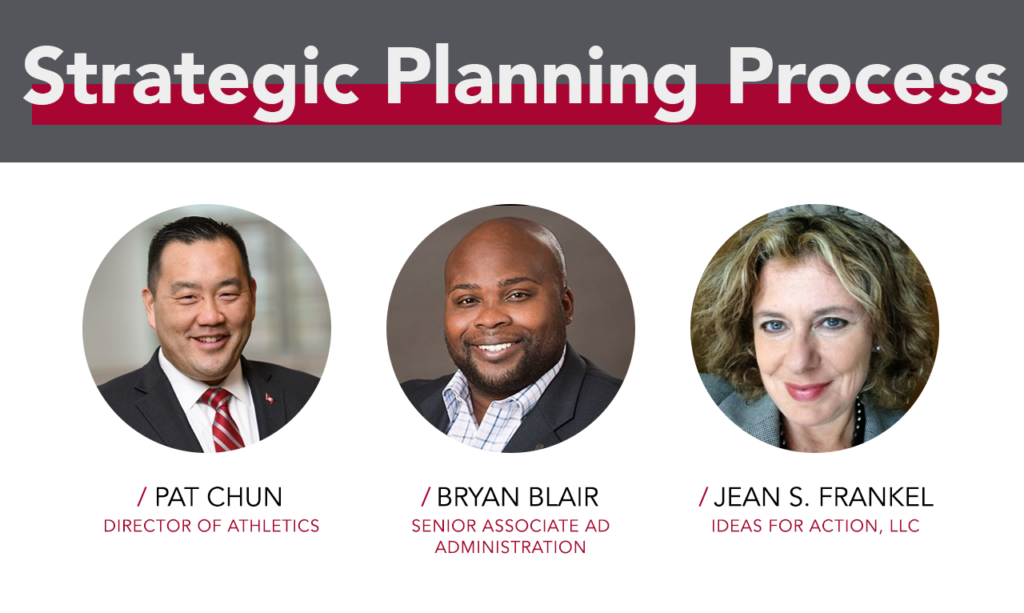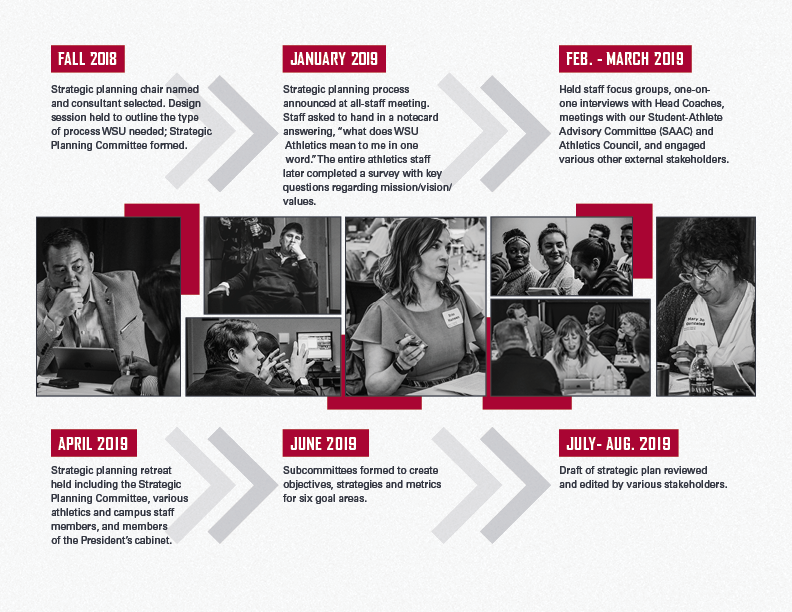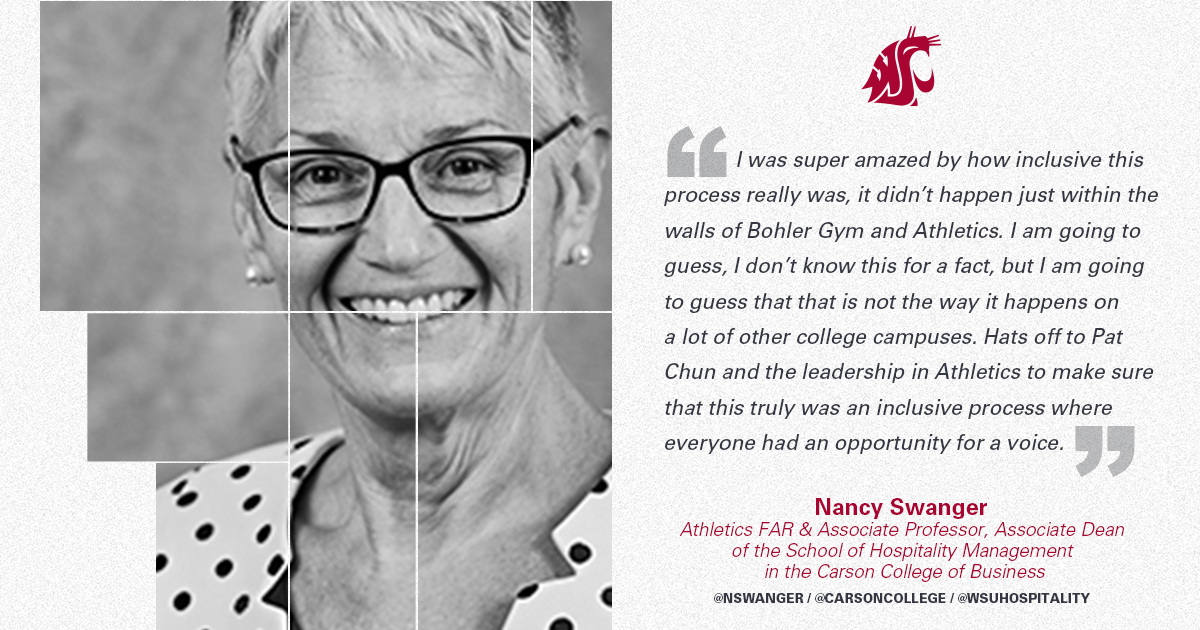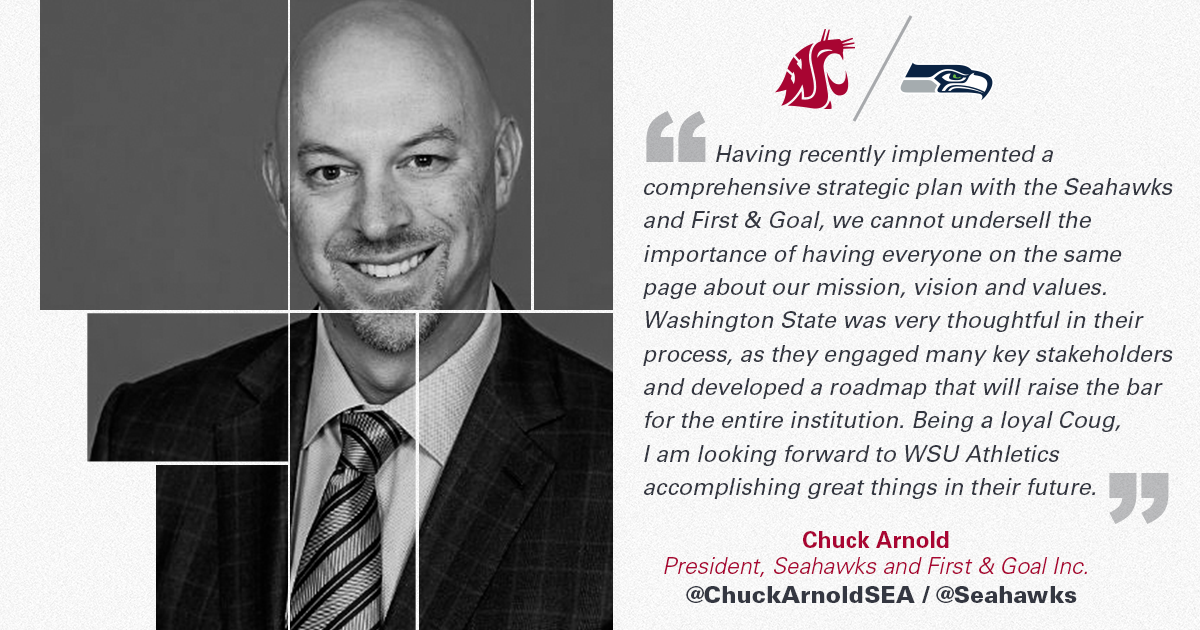The strategic planning process is usually an exciting time for an athletic program. Bringing together various stakeholders from across the university to help create a new vision statement serves to infuse the entire department with a sense of energy and optimism for the future. No process is unique, and conditions within an organization play a pivotal role in informing the design and technical requirements for a strategic planning and management system that fits.
On August 28, Washington State University unveiled, UNLEASH, a strategic plan for advancing the future of Cougar Athletics. The culmination of thousands of man hours, UNLEASH has positioned WSU to capitalize on a dynamic set of resources and capabilities that will allow it to compete at the highest levels of college athletics for the foreseeable future. AthleticDirectorU explored many of the challenges associated with the creation of UNLEASH in Part I of this series. We now continue our inside look into the development and now execution of WSU’s strategic plan.

In Part 1 we discussed the significance of planning, the various roles and responsibilities and some of your early wins. After “data collection” (surveys, focus groups, retreat, etc.), what steps did you take to finalize the Strategic Plan?
Bryan Blair: After our data collection, which spanned almost five months, the next steps were to begin defining our mission, vision, values, and our six strategic goal areas. The mission, vision, and values emerged from our conversations with various stakeholders. The survey that our staff completed was particularly helpful in this respect, since the questions were open ended and our staff provided very robust responses. We wanted the mission statement to be short, concise and memorable, while conveying our true purpose. The question we kept asking is if I randomly stop any staff member in the hallway, can they recite our mission statement. We hoped for our vision and accompanying big, hairy audacious goal (BHAG) to be aggressive, inspiring, but achievable. The question we kept asking here is “does this make us slightly uncomfortable”. If the answer was “yes” to those two questions, we felt we were on the right track.
The six goal areas emerged throughout our various discussions and analysis of WSU Athletics. Once these areas were defined, we then assigned subcommittee co-chairs for each goal area. These co-chairs were strategic planning committee members and worked in an area of expertise that we felt was relevant to the goal area they were assigned. For instance, our Senior Associate AD/CFO co-chaired the Resource Stewardship subcommittee. The subcommittees were tasked with defining our objectives, strategies and accompanying metrics. The co-chairs selected the members of the subcommittees, with the goal being broad representation from across the WSU system campuses, WSU Athletics and our community, not just subject matter experts. We then gave those subcommittees an outline of expectations, sample objectives/strategies and strict deadlines, since we previously decided upon an aggressive roll-out date.
Once we had drafts of the plan, a significant amount of time was spent testing the drafts with various stakeholders and word-smithing the components into a singular voice. It is important to realize that no matter how much time you spend word-smithing and testing, you can’t please everyone. You come to peace with this decision by following a well-planned process.

What are you most proud of regarding the final product?
Pat Chun: As someone who has spent the entirety of their professional career in college athletics, I marveled at the positive reaction to our plan within our industry. Our industry is filled with many high performing individuals who are diligent about “studying their craft” of college athletics. The great ones in any profession possess a growth mindset and are constantly trying to learn new things. Since our launch, a multitude of colleagues from around the country continue to reach out and inquire about our process and model. The inquiries were more than expected and it was great to articulate why our process and model worked so well for Washington State. I take enormous pride with being a part of the team that created a strategic plan that resonated across our entire industry.
Bryan Blair: I was really impressed by the excitement our staff, campus and community exhibited for strategic planning. We engaged a very broad cross section of stakeholders, including faculty, staff, student-athletes, community members and alumni, all in a span of six months. That required a number of individuals to work with aggressive deadlines, all while balancing day-to-day responsibilities. The Cougs embraced the opportunity to engage in this planning process and that’s really encouraging as it will take a tremendous amount of similarly spirited teamwork to accomplish the plan we’ve unveiled.
Furthermore, I’m really proud of how we captured each stage of our process. It would have been too late to look back and wish we had footage of various steps. Therefore, we partnered with our external team early on to capture as much as possible, so we can continue to tell our story. From photos of our retreat, to post roll-out “instant reaction” videos, we tried to capture it all. These reaction interviews provided a timely check in after each step and also gave us footage to proactively tell our story. Frankly, we have more footage and pictures than we will ever need, but it was imperative that we decided upon this course of action at the very beginning.
Jean Frankel: I’m proud that it was collaborative, across the whole WSU system, engaging campuses, colleges and units who previously may not have had as strong a connection to or support for the role of intercollegiate athletics in the university system. The process was not just lip service, but actual engagement across the system in working groups, task forces and the creation of the actual plan. Hopefully everyone in the university can see a bit of themselves in the plan.
I’m proud that it reflected the uniqueness of WSU – not just a cookie cutter approach. Vision, values, “Coug-ness”, yet pride in its accomplishments and optimism for the future.
I am also very proud of the energy of the launch! I wasn’t on campus for the launch event on August 28, but President Kirk Schulz was, and he texted me “fantastic crowd for the athletics plan launch!”, along with a photo of me from the launch video, in which I happened to be wearing a large gold chain, and he jokingly asked if it was meant to be a replica of the University of Miami turnover chain (it wasn’t!). There isn’t a president in Division I who is more energized by college athletics, or more optimistic about the role it can play in the success of the institution than President Schulz. It was honor to help make this happen for WSU and WSU Athletics.
As the first plan done under our new system-wide strategic planning framework, the Cougar Athletics strategic plan, and the planning process, will serve as a model for all other efforts across the university system. I’ve already asked Pat and Bryan if they would be willing to speak to other units about their experiences with the process and provide their advice for success. As well as being participants in the processes of other units. And they are doing it!!

Looking back on the process as a whole, what would you have done differently?
Bryan Blair: Honestly, it may be too early to answer this in any robust fashion. I kept a journal and made note of minor changes I would make next time, but we are very much in a wait and see stage. I would imagine this answer will be much different 3-5 years from now. If I had to say one thing thus far, it would be to not underestimate the time commitment to complete such a collaborative strategic planning process. Our process and accompanying roll-out was very time intensive and consuming. In fact, our external team was finalizing various aspects (e.g. graphics, videos, promotional items, etc.), all in the month leading up to our first home football game. The same could be said for all of our staff members as we prepared for the start of the fall semester. That said, I don’t think I’ll ever do another strategic plan and not use a collaborative approach. Choosing the date for the roll-out may be a different story!
What steps did WSU take to ensure buy-in among your numerous stakeholders?
Pat Chun: As with any important task, we operate with the fundamental understanding that you have to align and collaborate with as many people as possible to achieve an extraordinary outcome. Fortunately for us, our President Kirk Schulz has embedded and stewarded a collaborative culture within our university. Plus, with Jean Frankel already consulting for the Washington State University system, we had the underpinnings to set us up for success. Our strategic planning committee created the platforms and vehicles to ensure buy-in from our key stakeholders. We were able to maximize existing relationships to create communication opportunities and used our process to build bridges to areas of campus that needed to have relationships reset or reestablished.
Bryan Blair: I hope the broad engagement, coupled with the energy we put into the unveil, yield a certain degree of initial buy-in. We went to extraordinary lengths to ensure a broad cross section of stakeholders had a chance to provide feedback. For example, our core values came directly from an activity we did in our first all-staff meeting after announcing our intention to create a strategic plan. We had each staff member hand in a note card answering “what does WSU athletics mean to you in one word?” Those top responses gave us our five core values that just happened to fit in an acronym and mirrored the feedback we got from the various stakeholders outside of athletics.
We unveiled our plan in a way I have never seen before, really modeling what we have done with announcing new coaches. From our band playing our fight song to our spirit group throwing out branded #UnleashWSU t-shirts & other promotional items, we wanted the campus and all of our stakeholders to understand that this is an important step for the future of our department and university.
Lastly, this is an ongoing process and we have to be transparent. As we implement our plan, we need to ensure accountability and keep score of our successes, as well as any setbacks we incur. Success is not a straight line trajectory, but we feel strongly that our brightest days are ahead if we fully implement our strategies and objectives.

From your perspective, how does WSU ensure implementation of this plan?
Pat Chun: Unleash has to become a living, breathing document. To ensure this, we have to stay proximate with our strategic plan. It needs to become woven into the fabric of our department. This is done through constantly talking about the plan, working towards achieving its goals and celebrating the accomplishments as they occur. We will keep score and make continuous assessments related to progress.
Bryan Blair: We have a full implementation plan that includes additional Strategic Planning Committee meetings, metrics, department-wide check-ins and annual strategic planning actions that will ensure we remain on task and stay vigilant in the ever changing environment of college athletics. Strategic planning will remain a department focus for years and years to come.
Jean Frankel: My strongest piece of advice on implementation is to make sure that there is an annual strategic plan review session, to look back, look forward and renew commitment and energy toward the plan. An annual strategic planning review session has four parts:
- Our World – Looking at changes to the environment of intercollegiate athletics and higher education, assessing risks and challenges (such as SB 206).
- Our Identity and Direction – Are we still living our mission and values, and is our vision still the right direction?
- Our Progress – How did we do with the goals/objectives/metrics we set out to accomplish in the past year?
- Our Priorities – Given all of the above, what should we focus on next year?

What advice would you give a colleague about creating their own strategic plan?
Pat Chun: This won’t be a revelation to anyone, but you have to have the right team in place to create your strategic plan. The project is too big for a few people to author and the buy-in necessary to implement has to be nearly 100 percent. Ultimately the design, launch and implementation of the plan has to become a great unifier for the department. The passion and pride that needs to be poured into its creation has to be authentic.
Personally, I was inspired by the time and commitment poured into our process by Bryan Blair (Chair, Strategic Plan Steering Committee), Bennett Askew (Vice-Chair, Strategic Plan Steering Committee), and our entire strategic planning committee. Our department takes great pride in our student-athletes and WSU, but we also know we have a responsibility to grow our department to its greatest heights. Unleash will serve as a great road map as we navigate together the complex future of college athletics.
Bryan Blair: First, reach out to as many colleagues as possible. I reached out to my network when we began to understand the successes and challenges other institutions faced while creating a strategic plan. College athletics is a wonderful industry, in large part, because of the collegiality that takes place. Our plan leaned heavily on the advice of colleagues nationwide.
Second, focus on the process, as much if not more, than the final product. This is a very common saying in athletics, but I think it definitely applies to strategic planning. The process we followed, the consultant we chose, the way we unveiled our plan was all very unique to WSU Athletics and where we sit today. The next time we set out to create a new WSU Athletics Strategic Plan, the process will undoubtedly be different, as it would if we were at another institution. There is no one size fits all approach to strategic planning and your uniqueness is ultimately your greatest value proposition.
Finally, get the right people in the room. I’m a firm believer that buy-in comes from shared ownership and creation, but our plan doesn’t come together without the right people being involved from the start. I’m thankful to Pat Chun for allowing me to lead our planning process and laying out his vision for a collaborative approach. I’m thankful to President Kirk Schulz for bringing experts to our campus like Jean who not only have an expertise in strategic planning, but also kept us in line with our developing system wide strategic initiatives. I’m also thankful to Bennett Askew for volunteering to assist me in this process and helping share the workload. The more collaborative approach you employ, the more work it takes to arrange the feedback mechanisms and collect/process all the information. This plan doesn’t come together without those four, our strategic planning committee and all the other amazing Cougs who took part in this process.
*Click below to hear Pat Chun, Bryan Blair, and Jean Frankel provide insights on how and why certain aspects of the strategic plan were chosen and will be implemented*


